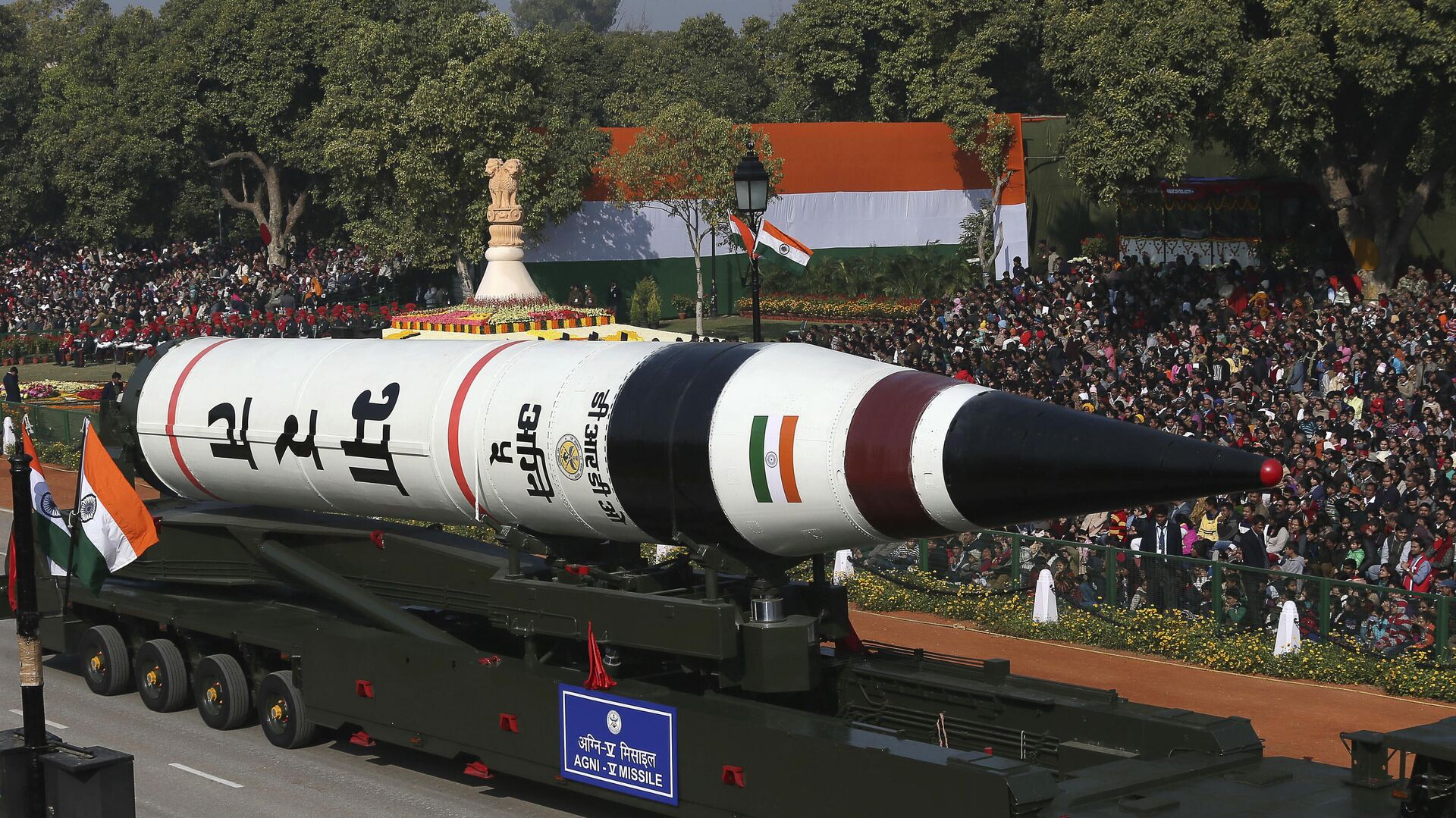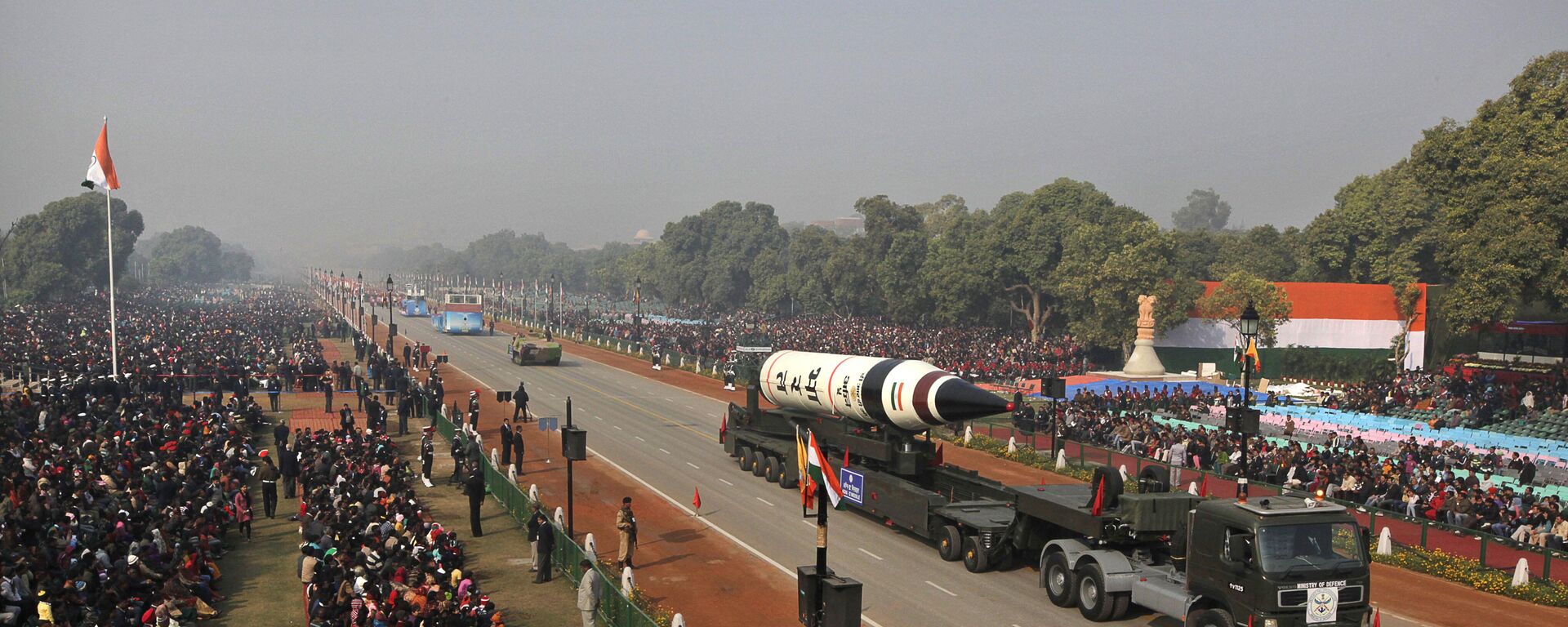Ultra-Long-Range Strategic Bomber: Transformative Leap For the IAF

© AP Photo / Manish Swarup
Subscribe
Media reports suggest that India is planning to develop an indigenous ultra-long-range strategic bomber, a momentous shift from its present doctrine, given the fact that it has never operated such an aircraft in the past.
India's reported move to design and domestically manufacture an ultra-long-range strategic aircraft (ULRA) will be a "transformative leap" for the Indian Air Force (IAF), allowing it to carry out missions across continents, and transcending it into a true global air power, experts have said.
The ULRA represents a transformative leap for the IAF, marking its evolution from regional to global power projection capabilities. The ambitious project envisions a stealth bomber capable of striking targets over 12,000 kilometres away, placing it among elite strategic bombers operated by global powers, reckoned Bengaluru-based defence analyst Girish Linganna.
"This development would fundamentally revolutionise IAF's combat doctrine by enabling global nuclear strike reach, reinforcing second-strike nuclear capability, and providing strategic leverage in regions far beyond India's immediate neighbourhood. The bomber would complete India's nuclear triad through airpower, allowing large-scale, long-range missions from home soil without reliance on forward airbases for refuelling," the military commentator told Sputnik India.
Such a capability would represent a definitive pivot in Indian defence policy from border protection to continental power projection, fundamentally transforming the IAF's strategic reach and operational flexibility, he added.
Furthermore, Russia's extensive experience with the TU-160 'Blackjack' positions it as an ideal partner for India's strategic bomber development through comprehensive technology transfer arrangements, Linganna underscored.
Russia has already offered India the direct acquisition of 6-8 TU-160M bombers, accompanied by unprecedented technology transfer, including complete source codes and integration capabilities for indigenous BrahMos missiles, the observer noted.
Key areas where Russia can assist include sharing advanced NK-32 turbofan engine technology, which powers the TU-160, providing expertise in supersonic bomber design, variable-sweep wing configurations, and stealth materials, he highlighted.
"Russia's willingness to transfer critical military technologies, demonstrated through successful collaborations like Su-30MKI production and BrahMos missile development, makes it uniquely positioned to support India's indigenous bomber program," Linganna asserted.
The established Indo-Russian defense cooperation framework, including joint research and development partnerships through organisations like the Defence Research & Development Organisation (DRDO) and Hindustan Aeronautics Limited (HAL), provides the institutional mechanism for such technology transfer, the defence pundit explained.
Moreover, Russia's experience in heavy bomber manufacturing processes, advanced avionics integration, and strategic weapons delivery systems would significantly accelerate India's bomber development timeline while ensuring operational effectiveness, he elucidated.
Meanwhile, Major General (Retd) Shashi Bhushan Asthana, a veteran of the Kargil War and a globally acclaimed strategic analyst, believes that the ULRA programme was a mere media speculation as India's Ministry of Defence (MoD) was yet to make an official comment on the matter.
"India has many other priorities in the air assets as compared to the ultra-long-range strategic bomber. Like the IAF is looking towards the Medium Multi-Role Combat Aircraft (MMRCA) deal, a whole lot of Tejas warplanes, and stealth fighters, as India needs more combat aircraft to tackle all sorts of aerial threats," Asthana said in an interview with Sputnik India.
Besides, strategic bombers are generally operated by nations that have global ambitions and expeditionary capabilities and who are in the process of doing so. India, as of now, as per its defence doctrine, is not developing expeditionary capabilities. Instead, India is developing weapons to meet our operational requirements, keeping in mind the strategic threats that the country faces, the retired Indian Army officer pointed out.
Indian weapons manufacturing and development philosophy is basically looking at certain capabilities and if the country's armed forces can reach all corners of the nation's adversaries, which in this case are India's neighbours, that should suffice their requirement, he observed.
"Yet, if and when India does plan to develop a long-range strategic bomber, it will look into the existing models, be it the American or Russian. But Russia will hold the edge, considering India has worked extensively with the Eurasian state on a wide variety of military equipment in the past and hence, it should be a procedural jump in a manner that New Delhi goes for a collaboration in the first place before moving towards production at home," Asthana stressed.
Case in point is India's well-documented struggle for fighter jet engines, something it would like to avoid before moving forward with the strategic bomber project, the international relations specialist mentioned.
Notwithstanding that, India has a nuclear triad. It has all kinds of weapons, including a major thrust on increasing their range. The Agni-V has a range of over 5000 km, and its planned successor, Agni-VI, will feature a range of around 11,000-12,000 km, thus matching the range of a strategic bomber, he specified.
"In addition to that, missiles are far more cost-effective than bomber aircraft. Plus, the latter needs a fair amount of air superiority due to the very high density of air defence prevailing in the world right now," Asthana concluded.


